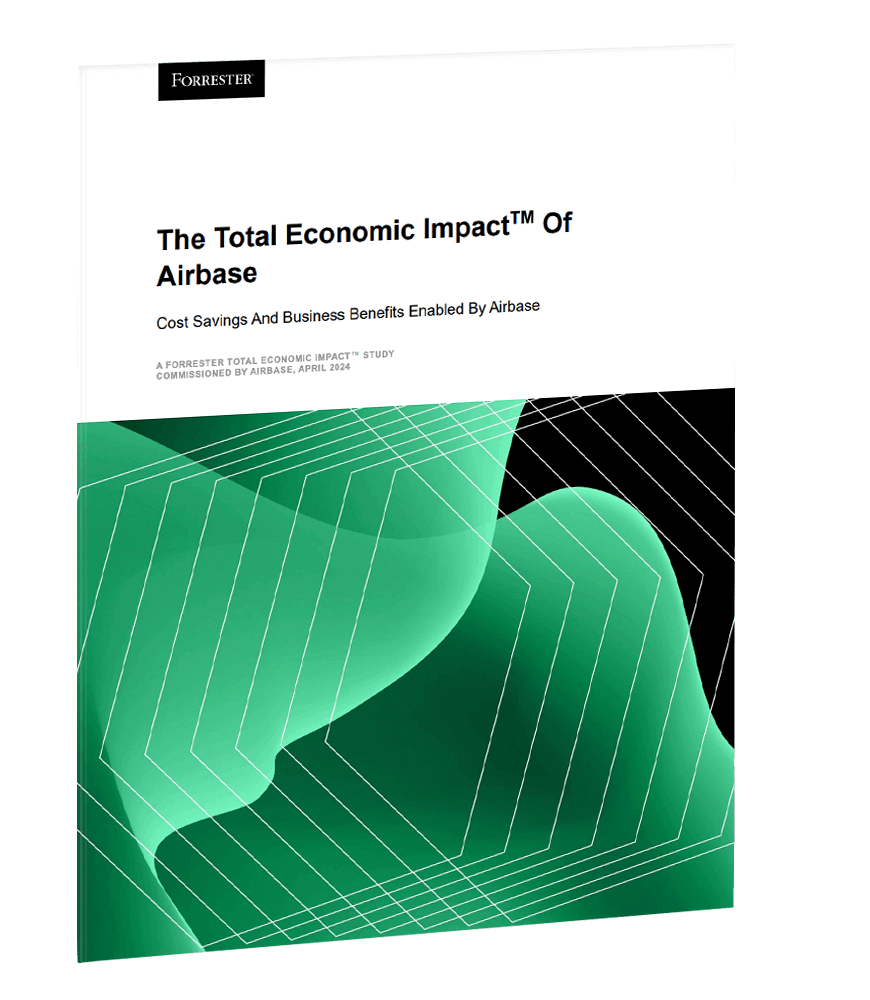“It can be all too easy to build on existing inefficiencies or see teams retreat into silos, resulting in wasted budget dollars going to everything from overlapping software services to unused office space.” — Forbes Finance Council
Modern businesses have a lot of bills to pay. From social media marketing and IT services to labor and office supplies, operating expenses and overhead costs eat into profits.
Long-term sustainability and financial health depend on cutting business costs in every corner.
If you’ve already leveraged traditional expense categories, like reducing staff and moving to more affordable office space — or transitioning to a fully remote model — how do you cut more expenses from day-to-day operations?
The short answer: with better spend visibility.
Let’s look at actionable ways modern businesses find meaningful cost-saving opportunities with spend management.

1. Automate manual work.
Automation takes over repetitive tasks, reduces labor costs, and minimizes the risk of costly human errors. Automating time-consuming tasks like invoice processing, payroll, and expense management gives employees more time to focus on tasks and initiatives that strengthen the company’s core business strategy.
Time spent here contributes to business growth and increased profitability.
Small business owners might not give enough thought to automation — they assume it’s prohibitively expensive or unnecessary. However, platforms like Airbase prioritize cost-effectiveness and give proactive teams the flexibility to pick and choose tools.

The earlier you start automating processes, the easier it is to scale them as your business grows.
Not convinced that automation makes that much of an impact? Airbase’s automated accounts payable platform saved SeekOut one full-time headcount.
2. Reduce rogue spend.
Rogue spend happens when employees purchase anything outside of a company’s procurement mandate. A type of tail spend (often referred to as maverick spend, and even dark purchasing), rogue spend is one of the first expenses any company should work to control; small instances of unpredictable purchases add up.
Curbing this type of questionable expense means setting up a clear approval chain where all expenses are vetted and authorized. Finance teams notice surprising gains here.
According to a survey by Spend Matters, procurement professionals estimate that 23% of their spend is rogue. Robust approval workflows and strict spending policies reduce rogue spend, making sure that every purchase is necessary, within budget, and contributes to business objectives.
3. Fend off fraud.
A PYMNTS survey of 2,750 businesses estimates that invoice fraud costs mid-market businesses $280,000 per year — each. Strict controls and automated systems that flag suspicious invoices mitigate the risk of fraud and protect your bottom line.

Fraud prevention requires multiple layers of protection.
Here’s how to start:
- Implement automated fraud detection tools that identify and flag suspicious activities.
- Adopt a system of checks and balances, such as dual approvals for large purchases.
- Train employees to recognize fraud and encourage them to point out suspicious transactions.
Fraud detection protects your financial resources, business integrity, and industry compliance.

Expense Management Tour
4. Strengthen vendor relationships.
Positive vendor relationships lead to lower prices, favorable contract terms, and preferred customer discounts. But strong supplier relationships don’t happen by accident.
As a business owner, here are five ways to strengthen your vendor relationships:
- Be transparent and communicate expectations.
- Regularly review vendor performance and provide feedback.
- Consolidate purchases for bulk discounts and better terms.
- Consistently pay invoices on time and in full.
- Adopt a dedicated, comprehensive procurement and vendor management solution.
When you control expenses, you save money. That’s why it’s worth establishing long-term contracts with trusted vendors. By doing so, you put yourself in a favorable position to negotiate better deals and discounts to keep business costs down. As an added bonus, preferred customer status leads to better supply chain efficiency and security.
5. Reduce errors.
Error reduction improves the accuracy of your financial data, leading to better decision-making, cash-flow management, and regulatory compliance.
The Global Business Travel Association found that it takes 18 minutes to correct one expense report — and costs your company $52. But this statistic doesn’t take into account the interruptions to workflows and focus, so the actual monetary and time costs may be much higher.
Errors like these that go uncorrected impact cash flow, budgets, and financial forecasts.
This is another area where automated accounting software is invaluable. Automation reduces human errors and highlights issues as they happen. Add regular financial audits on top to identify and correct errors that might be missed, and work to build a company culture of accountability and transparency so team members flag errors early and often. These checks work together to reduce the likelihood of unnoticed errors.
It takes 18 minutes to correct one expense report — and costs your company $52. The actual cost is higher when you factor in workflow disruption.
6. Get more spend under management.
Robust procurement and spend visibility tools bring more of your spend under managed control so you can budget and reduce business expenses efficiently.
World-class companies have around 95-97% of their total direct spend under management — other companies typically fall between 66% and 70%.
Centralized procurement systems put a clear lens on spending and offer analytics and reporting tools to track spending patterns and identify opportunities to lower costs.

7. Manage renewals effectively.
Be honest — how many of your subscriptions auto-renew with zero or minimal oversight?
Everything is “as a service” now, and all of those services and subscriptions add up. A new survey by Gartner reveals that 60% of enterprise tech buyers regret nearly all of their purchases.
With so many options available, there’s no reason to keep losing money on software that doesn’t meet your needs or serve your company effectively. Yet many businesses continue to let unused or inefficient software subscriptions renew over and over, either because they don’t know it’s happening or they don’t put someone in charge of monitoring renewals.
60% of enterprise tech buyers regret nearly all of their purchases — Gartner
Here’s how to get wasteful spending under control:
- Build an inventory of all subscriptions and their renewal dates.
- Appoint a team to conduct reviews on a cycle to assess the value and necessity of each subscription before it renews.
- If a solution is no longer needed or could be replaced by a better service, cancel it and enjoy the cost savings.
8. End zombie spend.
Months after an employee leaves the company, you might discover you’re still paying for subscriptions or resources that only they used. That’s zombie spend, and eliminating it reduces expenses immediately.
Here’s how to stop zombie spend from eating away at your revenue:
- Make corporate card deactivation and subscription cancellation part of your offboarding process.
- Implement a centralized system for managing all subscriptions and recurring payments to keep them visible and under control.
- Regularly audit recurring charges to identify and scrap any unused services.
9. Monetize AP.
“Airbase’s virtual cards have been really helpful in streamlining and managing all that spend.” Alex describes the virtual-card concept as “mind blowing,” and the simplicity of the early days has returned. “If a team member needs to set up a new expense, they just create a request in Airbase and Jason will set up a virtual card.” — From the Lattice case study
Make your money work for you — streamline payment processes and earn cash back on every bill you pay by using virtual cards on a consolidated platform.
With Airbase single-use virtual cards, it’s easy to generate a card for each new expense. This method approves all transactions through the right channels before purchase.
Virtual cards create better security and control, so it’s easier to track and manage expenses, reduce the risk of fraud or unauthorized transactions, and further cut costs.
10. Curtail tail spend.
Tail spend is a subset of indirect spend. It describes high-frequency, low-cost purchases.
Though often used interchangeably with maverick spend and rogue spend, maverick spend is a type of tail spend where an undocumented purchase happens without an official contract or policy to support it. Uncontracted (and sometimes non-compliant) expenditures can snowball into a big expense. Rogue spend is similar to maverick spend (see #2 above), differing only in its nature — a rogue expense is unpredictable — you question why it was needed at all.
Optimizing tail spend purchases should be a focus because they make up around 20% of company spend on average — spread out across 80% of its vendors.
All of these constant minor expenses might not seem to make much of a dent, since tail spend encompasses the often overlooked purchases that add up over time. But optimizing tail spend purchases should be a focus because collectively they make up around 20% of company spend on average — spread out across 80% of its vendors.
To get tail spend under control, you have to know where and what it is. So treat it like the rest of your spend and include it in your procurement policies and spend analysis tools. This will help you track tail spend and ensure that each purchase is necessary and cost-effective. Also encourage employees to consolidate small purchases to access better supplier terms and further reduce expenses.
Cutting costs in business through better visibility and control.
Cutting business expenses is a challenge, but these 10 business expense reduction tips reduce costs, increase profitability, and ensure long-term business viability. The underlying premise is greater spend visibility and control — and that’s where Airbase comes in.
Airbase’s comprehensive procure-to-pay platform connects every area of business spend and unites it in a centralized location for ultimate control and visibility. From initial need identification to invoice payment, Airbase sets up customized, automated workflows to guide procurement and spend, ensuring company-wide compliance. With in-depth spend analytics and reports, you get deep insights into spend patterns, inefficiencies, and cost-saving opportunities.
Schedule a demo today and see how Airbase takes your cost-cutting measures to the next level.
FAQ.
What are examples of cost cutting?
Cutting costs happens in a number of ways. Examples include cutting wasting spend, fending off fraud, and automating processes to improve profitability.
What are the potential areas where a business can cut down expenses?
Traditional business costs fall under office supplies, travel and entertainment expenses, and inefficient marketing efforts. But real impact for cost cutting happens when companies install careful control of procurement procedures, adopting technology to automate processes and protect spending across the company, traditional or modern.
How does reducing business expenses increase profitability?
Earnings less expenses equals profit. If you cut expenses, you make more money. It’s simple math: when you spend less, the margin between revenue and expenses widens, resulting in a higher portion of income being actual profit. This improves the financial health and long-run sustainability of a business.
 Jira Integration – Streamline Your Workflows
Jira Integration – Streamline Your Workflows  Ironclad Integration – Simplify Legal Operations
Ironclad Integration – Simplify Legal Operations  Asana
Asana 




